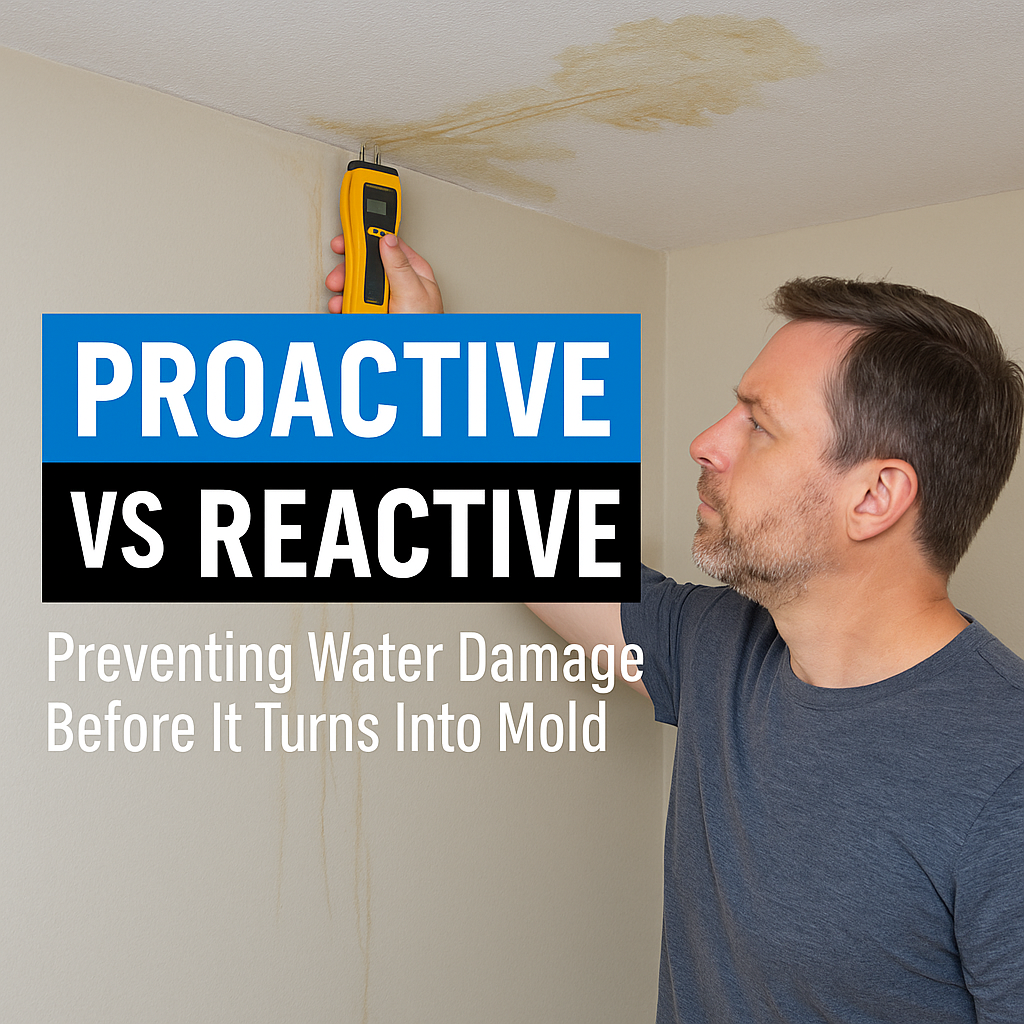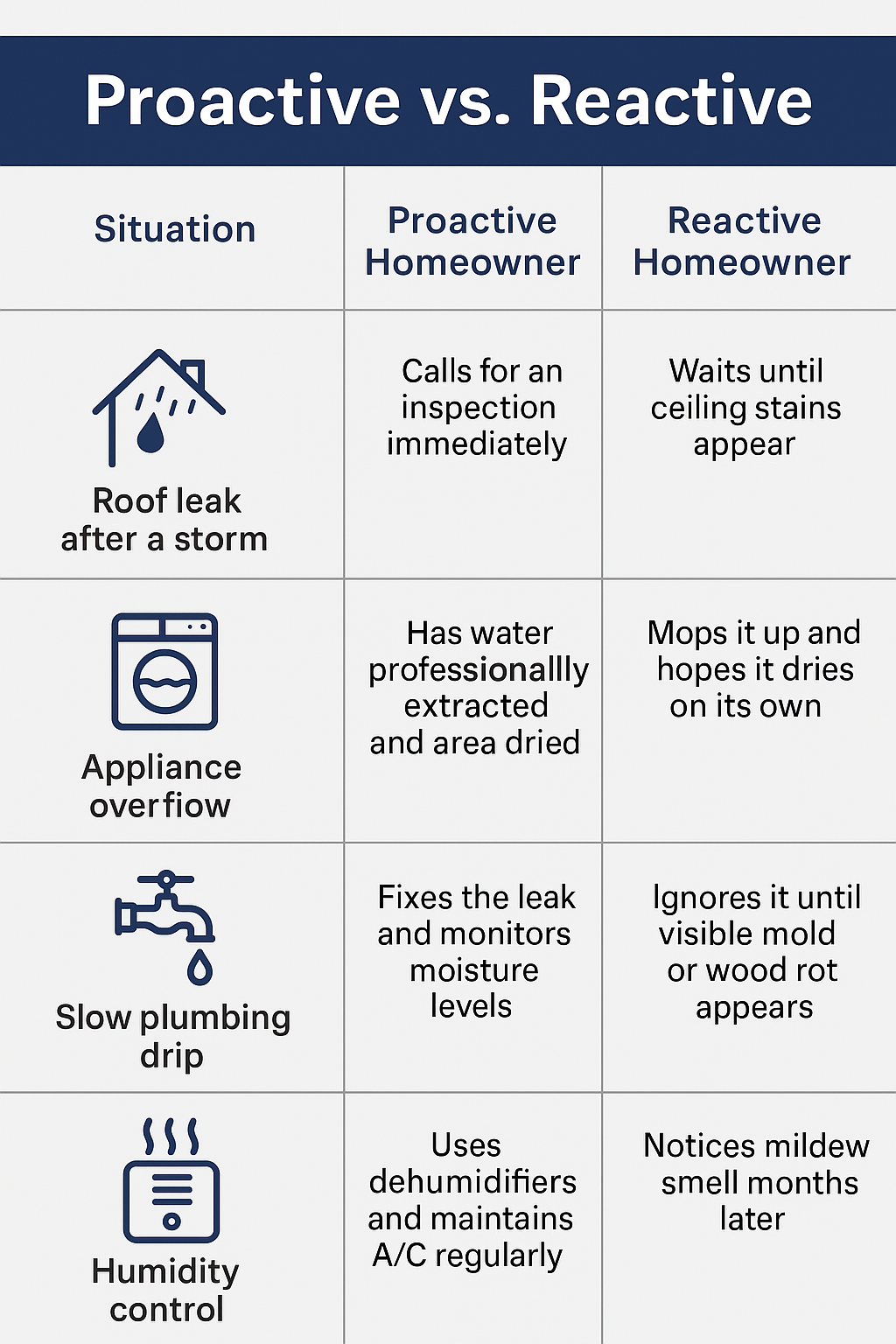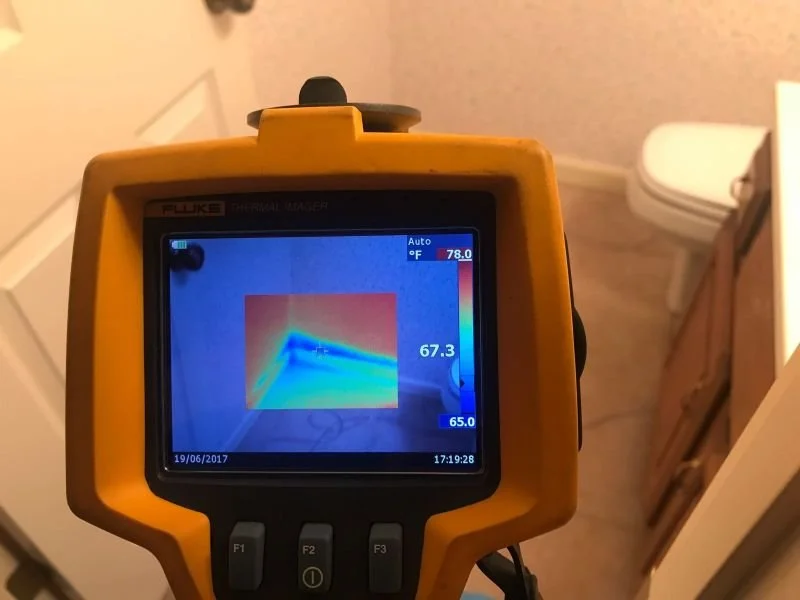Stay Proactive, Not Reactive: How Quick Action Prevents Water Damage and Mold
Mold doesn’t need much time to grow — just 24 to 48 hours of excess moisture is enough. Once it starts, it spreads quickly through porous materials like drywall, carpet, and wood framing.
When it comes to water damage, time is your most valuable resource. In our line of work at Rapid Dry Moisture Recovery Services, we’ve seen how a few hours of hesitation can mean the difference between a quick dry-out and a full-scale restoration job.
A small plumbing leak, a minor roof drip, or an unnoticed appliance overflow can seem harmless at first — especially in a warm, dry place like Central Texas. But the truth is, moisture hides. It seeps behind walls, under baseboards, and into flooring where heat and airflow can’t reach. If not handled quickly and professionally, it becomes the perfect environment for mold growth.
Proactive vs. Reactive: What’s the Difference?
Being proactive means acting before water damage occurs or before it worsens.
Being reactive means waiting until you see or smell a problem — and by then, repairs often cost thousands more.
Most water damages are considered sudden and accidental, which means they’re usually covered by insurance — but only if you act quickly. Even a small delay in cleanup or drying can cause additional damage that may no longer be covered. The faster you respond, the easier it is to minimize costs, preserve materials, and stay within your policy’s coverage requirements.
Why Acting Fast Matters
Mold doesn’t need much time to grow — just 24 to 48 hours of excess moisture is enough. Once it starts, it spreads quickly through porous materials like drywall, carpet, and wood framing.
Some homeowners assume that because Texas is hot and dry, mold won’t be an issue. Unfortunately, that’s not true. High humidity, poor ventilation, and sealed-up interiors can actually make mold grow faster indoors — especially after a rain event or plumbing leak. Even if things “feel” dry, moisture can stay trapped under floors, inside walls, and behind baseboards where heat alone won’t reach.
And there’s another reason not to wait: your insurance company requires you to act quickly to prevent further damage. Most homeowner’s policies include a clause requiring “reasonable steps to mitigate loss.” That means if you delay action, your water damage claim could be denied or reduced.
Calling a professional restoration company like Rapid Dry right away protects both your home and your coverage. We document conditions, monitor moisture, and ensure materials are dried completely — not just surface-level.
Even after visible water is removed, moisture left inside building materials can continue to cause problems long after you think the job is done. The Texas sun might dry your driveway, but it won’t dry your subfloor.
Simple Ways to Stay Ahead of Water Damage
Inspect plumbing and appliances regularly.
Look under sinks, behind washers, and around water heaters for signs of drips or corrosion.Keep gutters and downspouts clear.
Blocked drainage can cause roof and foundation leaks during heavy Central Texas rain.Run dehumidifiers in humid areas.
Especially in basements, crawlspaces, or bathrooms with poor ventilation. Mold loves high humidity.Check your home after every major storm.
Wind-driven rain and rising groundwater can push moisture into hidden areas.Call a professional at the first sign of dampness.
A moisture meter can detect what your eyes can’t see — before it becomes a bigger issue.
Using Thermal Imaging to Detect Hidden Moisture
Thermal imaging cameras are one of the most valuable tools in modern water damage inspection. They detect subtle temperature differences in building materials, allowing technicians to “see” moisture that’s invisible to the naked eye.
When water evaporates, it cools the surface — creating a thermal signature that helps pinpoint leaks behind walls, under floors, or inside ceilings without unnecessary demolition. At Rapid Dry, thermal imaging helps verify drying progress, locate problem areas early, and ensure every affected material is fully addressed before equipment is removed.
Pro-tip: Bugs love damp spots. If you see them hanging around one area, check for gaps or leaks — they often show up before you realize there’s water damage.
When to Call for Help
If you’ve experienced flooding, plumbing leaks, or recurring dampness — don’t wait until mold appears. Rapid Dry offers 24/7 emergency response for water removal, drying, and free moisture inspections.
We use industry-standard equipment and documentation (IICRC S500 guidelines) to ensure your property is dried safely and thoroughly. Acting early can mean the difference between a one-day dry-out and a full-scale mold remediation.
Take Action Before Mold Does
Proactive homeowners don’t just save money — they protect their health, comfort, and property value. Whether it’s a minor leak or a full flood, Rapid Dry Moisture Recovery Services is here to help you act fast and stay ahead of damage.
📞 Call (254) 218-3757 for 24/7 water removal and moisture inspection.
🌐 Visit www.RapidDry.net to learn more about our water damage services.
We serve all of Central Texas
Related links:





